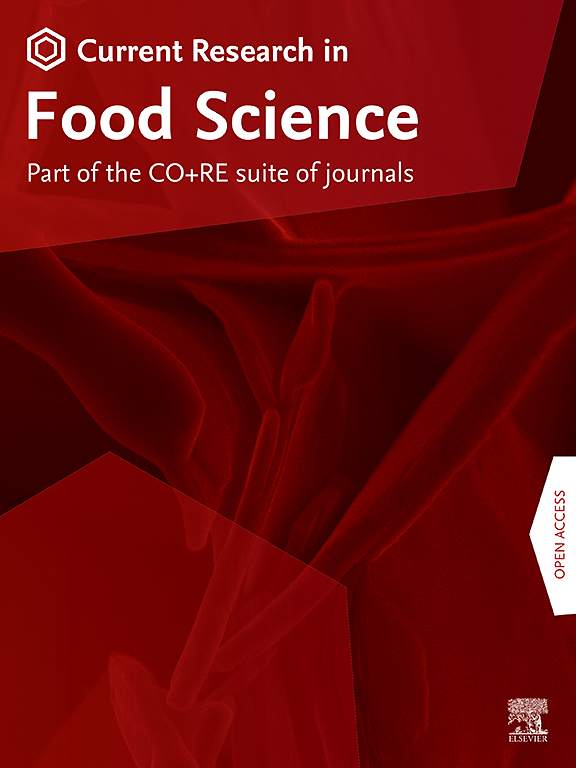Investigating the interaction between tangeretin metabolism and amelioration of gut microbiota disorders using dextran sulfate sodium-induced colitis and antibiotic-associated diarrhea models
IF 7
2区 农林科学
Q1 FOOD SCIENCE & TECHNOLOGY
引用次数: 0
Abstract
Dysregulation of gut microbiota homeostasis can lead to various health issues. In this study, we investigated the effects of tangeretin (TAN) on gut microbiota homeostasis in a mouse model (C57BL/6J) of disease, specifically focusing on dextran sulfate sodium (DSS)-induced colitis and antibiotic-associated diarrhea through in vitro fermentation of intestinal bacteria. Our results demonstrated that TAN effectively improved the diversity and structure of the disordered microbiota, increasing the levels of beneficial bacteria such as Lachnospiraceae and Bacteroidaceae, while decreasing harmful bacteria such as Enterococcaceae and Pseudomonadaceae. Additionally, TAN enhanced the production of short-chain fatty acids (SCFAs) in disordered microbial communities. Moreover, the metabolism of TAN by intestinal microorganisms yielded two new metabolites, which exhibited an inverse-conjugate (deconjugate) role, leading to the production of more functional substances with high bioactivity. These findings provide a scientific basis for the potential use of TAN as a prebiotic to regulate intestinal microbiota.

利用葡聚糖硫酸钠诱导的结肠炎和抗生素相关性腹泻模型研究橘子皮素代谢与肠道微生物群紊乱改善之间的相互作用
肠道菌群稳态失调可导致各种健康问题。在这项研究中,我们研究了橘皮素(TAN)对疾病小鼠模型(C57BL/6J)肠道微生物群稳态的影响,特别是通过肠道细菌的体外发酵,研究了葡聚糖硫酸钠(DSS)诱导的结肠炎和抗生素相关性腹泻。结果表明,TAN有效改善了无序菌群的多样性和结构,增加了毛螺杆菌科和拟杆菌科等有益菌的数量,同时减少了肠球菌科和假单胞菌科等有害菌的数量。此外,TAN还促进了无序微生物群落中短链脂肪酸(SCFAs)的产生。此外,肠道微生物对TAN的代谢产生了两种新的代谢物,它们具有反偶联(反偶联)作用,从而产生了更多具有高生物活性的功能物质。这些发现为TAN作为益生元调控肠道菌群的潜在应用提供了科学依据。
本文章由计算机程序翻译,如有差异,请以英文原文为准。
求助全文
约1分钟内获得全文
求助全文
来源期刊

Current Research in Food Science
Agricultural and Biological Sciences-Food Science
CiteScore
7.40
自引率
3.20%
发文量
232
审稿时长
84 days
期刊介绍:
Current Research in Food Science is an international peer-reviewed journal dedicated to advancing the breadth of knowledge in the field of food science. It serves as a platform for publishing original research articles and short communications that encompass a wide array of topics, including food chemistry, physics, microbiology, nutrition, nutraceuticals, process and package engineering, materials science, food sustainability, and food security. By covering these diverse areas, the journal aims to provide a comprehensive source of the latest scientific findings and technological advancements that are shaping the future of the food industry. The journal's scope is designed to address the multidisciplinary nature of food science, reflecting its commitment to promoting innovation and ensuring the safety and quality of the food supply.
 求助内容:
求助内容: 应助结果提醒方式:
应助结果提醒方式:


